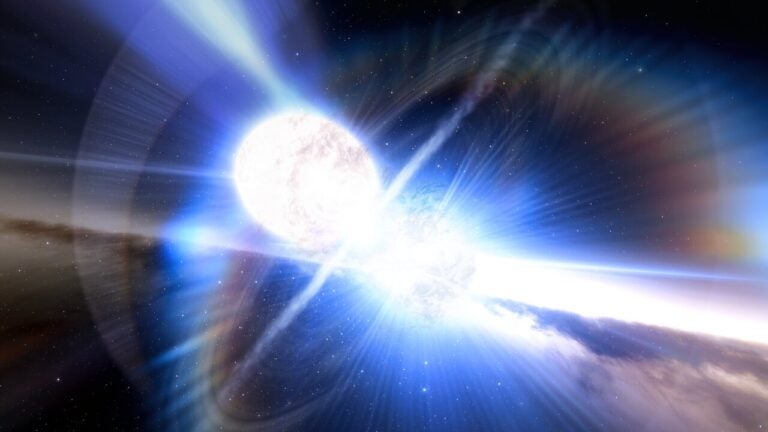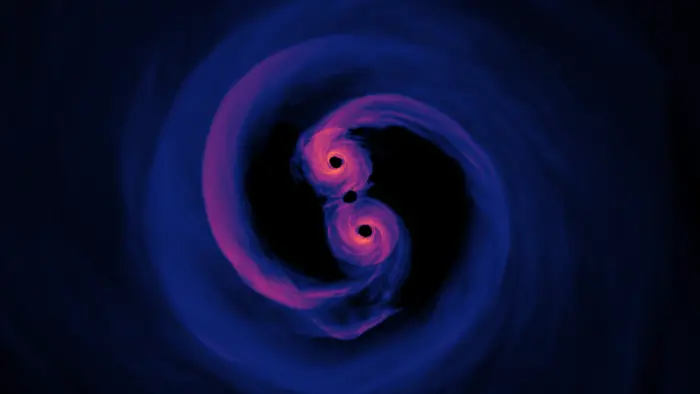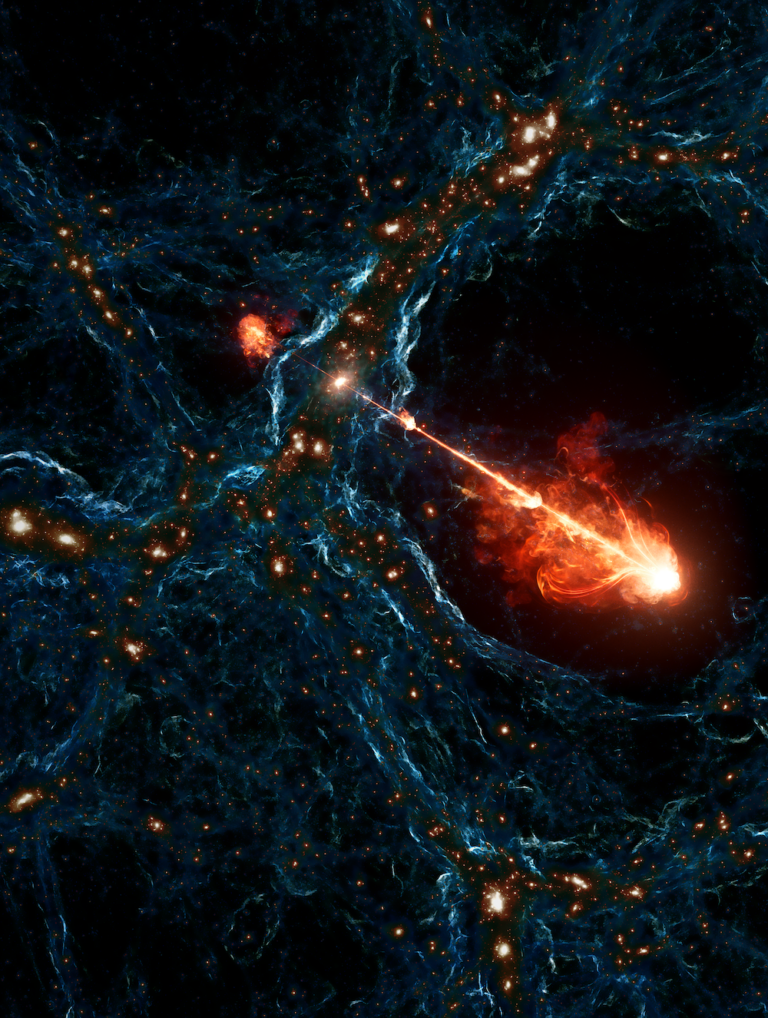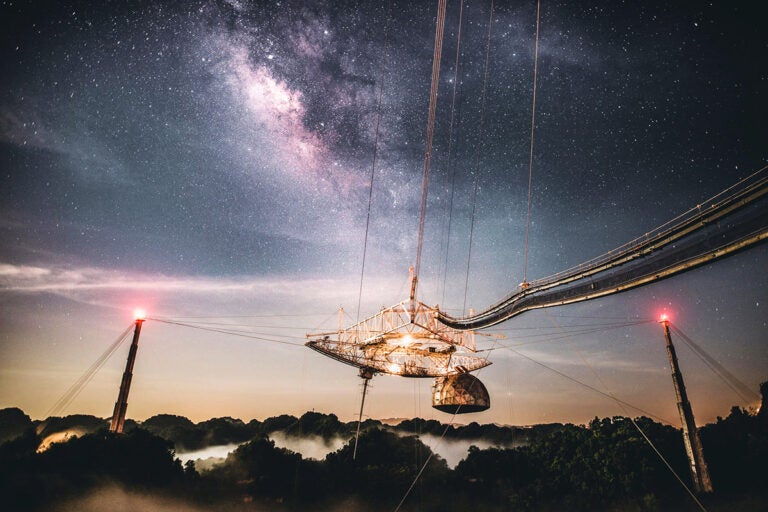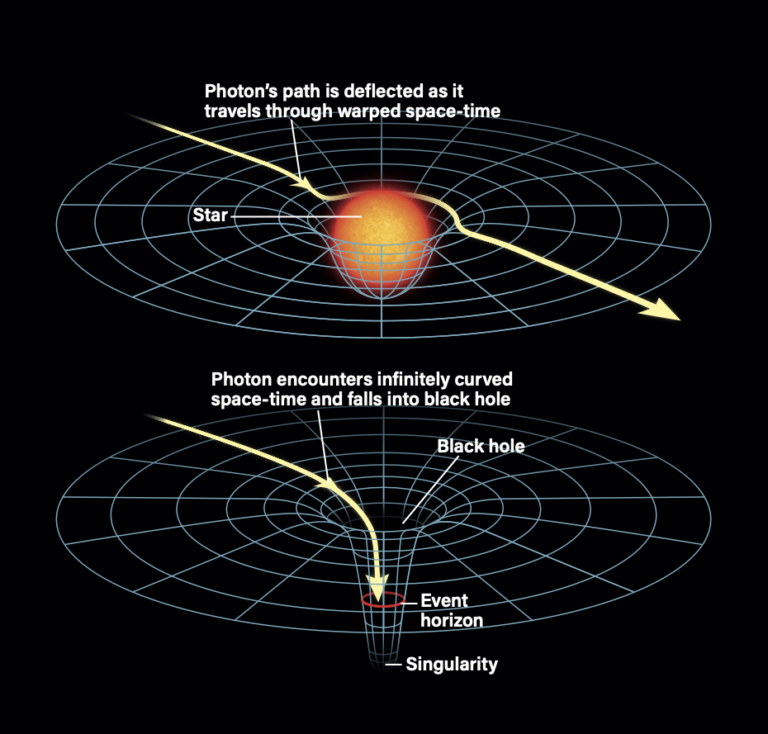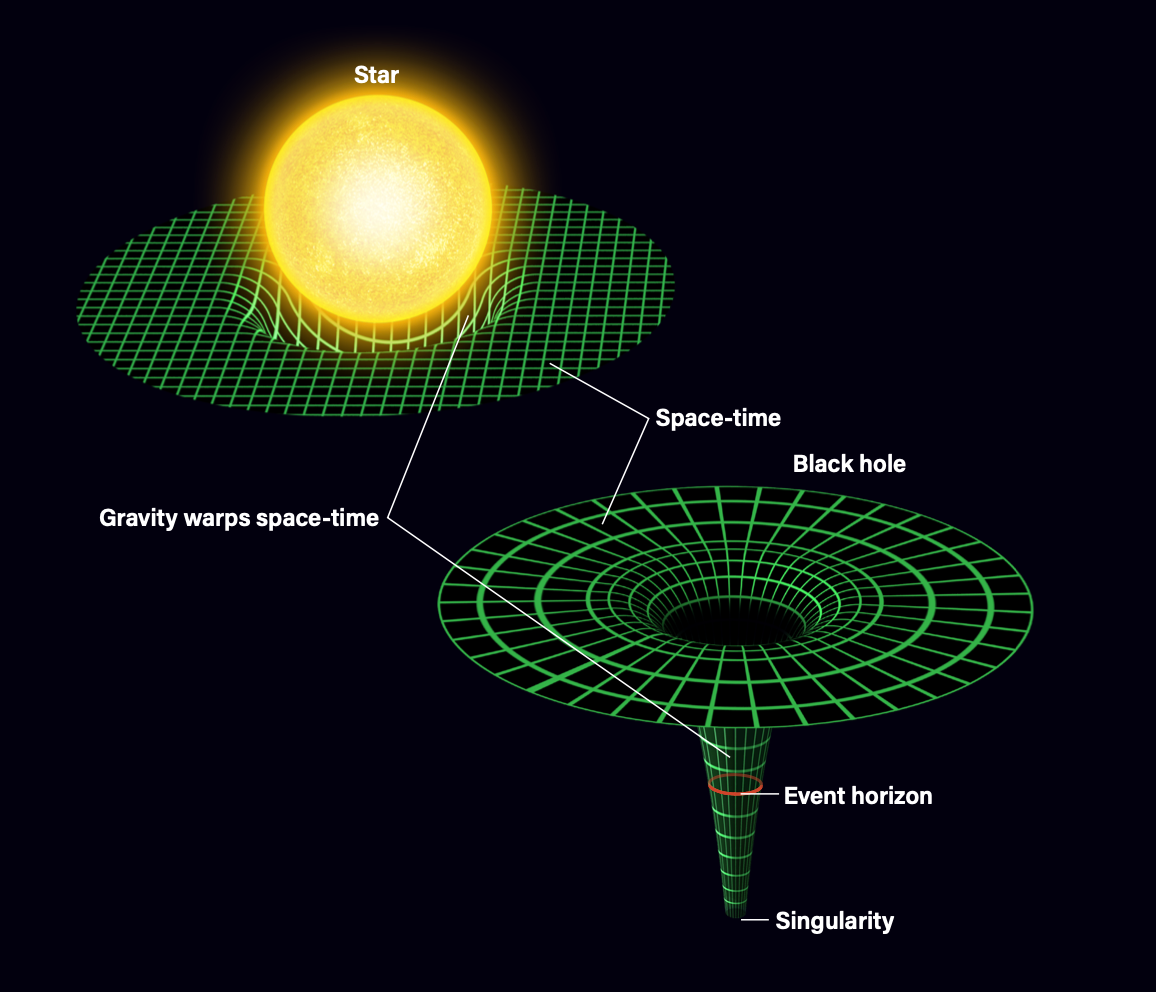
Is there a bottom of a black hole? Can a spaceship travel under one, or does it go on and on?
Rick Tello
Bisbee, Arizona
I suspect your question arises from seeing diagrams like the one here, which attempts to show how general relativity results in the curvature of space-time around massive objects. At the top left, it is easy to see how any massive object (i.e., a star) distorts the fabric of space-time (represented by the grid) but clearly has a “bottom” and doesn’t break through the grid. At the lower right, the black hole looks like a funnel with no bottom, as mathematically, black holes are points with mass but no volume; this means they have infinite density and so space-time there has infinite curvature.
But there’s a key problem with this picture. The best explanation I’ve found comes from one of my favorite textbooks, Exploring Black Holes: Introduction to General Relativity by Edwin F. Taylor and John Archibald Wheeler (Addison Wesley Longman, Inc., 2000). In it, the authors explain that such figures, called embedding diagrams, are meant to represent the complex geometry of curved space within the limited three-dimensional Euclidian perspective printed on the page. “But flat Euclidian geometry is not curved space geometry,” they write. “Therefore we expect embedding diagrams to misrepresent curved space in some ways. They lie!”
How do they lie? With regard to your question, the vertical aspect of the diagrams is not a real dimension of space-time. The concept of depth has been artificially added to the diagram to help the reader visualize how gravity affects space-time. Space-time is not a flat, two-dimensional grid; we just need to draw it that way on the page. So a black hole is not really a funnel-shaped object sitting out in space and sucking down matter in only one direction.
In addition to being an artificial representation, the embedding diagram also attempts to show what is happening inside the black hole’s event horizon, the point of no return. Real black holes are surrounded by a spherical event horizon, inside of which gravity becomes the dominating force and weird things happen, causing our laws of physics to break down. But outside the event horizon, the universe acts pretty normally. So, you can picture a black hole from afar as a sphere (for example, as seen in the movie Interstellar). And your spaceship can indeed fly under, over, or around a black hole any which way it chooses — as long as it doesn’t come too close!
Alison Klesman
Senior Editor


